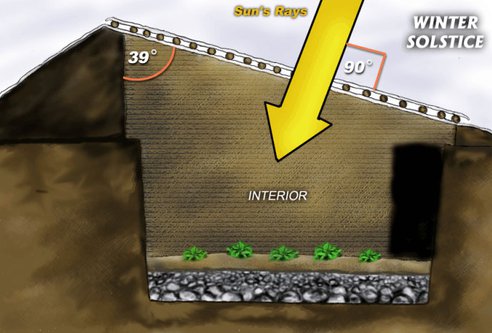
By
Thankfully, building a greenhouse can be made a much more affordable project if done the right way.
A goal for many is to build a greenhouse where nutrient-dense produce can be grown year-round in. Being able to produce food – especially in colder, rural locations – is a life source for man-kind; however, it’s the price tag of such an investment that has inhibited most from acting on this endeavor.
Thankfully, building a greenhouse can be made a much more affordable project if done the right way.
A typical greenhouse is a glazed structure with four walls and a roof; it is expensive to heat during the winter, yet offers the ability to sustain plant life during harsh seasons. While this design may be accessible to some, most aren’t ready or able to build a structure of this kind.
It’s a different model, however, that may make the greenhouse realistically attainable for all. The more affordable and effective design is known as a walipini, (an Aymara Indian word for “place of warmth”), or an underground greenhouse. The walipini was first designed for the cold mountainous regions of South America over 20 years ago. Sustainable and easy-to-create, it allows growers to maintain a productive garden year-round, even in the coldest of climates.
In the video above, a tour of the walipini is given – complete with a bit of interior space for goats.
An in-depth look on how to construct your own walpini can be found here (source: Non-Profit Benson Institute ) and here (source: Pure Energy Systems Wiki).
You’ll learn how the intriguing set-up combines the principles of solar heating with earth-sheltered building. Tapping into the thermal mass of the Earth, much less energy is needed to heat up the walipini’s interior compared to above-ground greenhouses.
The guide also shares certain precautions to take into consideration (such as waterproofing, drainage, and ventilation), offering every individual the ability to create their own underground greenhouse.
The best part may be that the walipini can be created for a few hundred dollars. According to the Benson Institute, their 20-ft by 74-ft field model in La Paz cost only around $250 – $300 due to the inexpensive materials used (plastic ultraviolet protective sheeting and PVC piping) and free labor by owners and neighbors.
With this innovative method of year-round gardening, greenhouses need no longer be an expensive, out-of-reach dream. Now gardeners from every background can have the chance to connect with the Earth, reduce food costs, and be the change they wish to see in the world.




